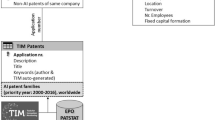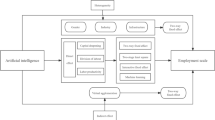Abstract
This paper examines the effects of wage taxation and corporate income taxation on training investment in frictional labor markets. Because of labor market frictions, the wage structure is compressed and workers do not capture the entire return from their skills. As a result, both firms and workers have incentives to support part of the costs of training investments. The analysis shows that when decisions to invest in training are made by firms and workers acting cooperatively, a wage tax increases the level of investment in skills whereas a corporate income tax decreases it. In this case, the introduction of a small wage tax unambiguously increases efficiency. The effects of both types of taxes on training are reversed when investment decisions are taken by firms alone. In any case, a corporate income tax is not neutral with respect to decisions to invest in skills even if the full cost of investment is deducted from taxable income in the period when it is incurred and the tax system provides full loss offset.
Similar content being viewed by others
References
Acemoglu, D. (1996). A microfoundation for increasing returns in human capital accumulation. Quarterly Journal of Economics, 111, 779–804.
Acemoglu, D. (1997). Training and innovation in an imperfect labor market. Review of Economic Studies, 64, 445–464.
Acemoglu, D., & Pischke, J. S. (1998). Why do firms train? Theory and evidence. Quarterly Journal of Economics, 113, 79–119.
Acemoglu, D., & Pischke, J. S. (1999a). The structure of wages and investment in general training. Journal of Political Economy, 10(3), 539–572.
Acemoglu, D., & Pischke, J. S. (1999b). Beyond Becker: training in imperfect labour markets. The Economic Journal, 109, F112–F142.
Acemoglu, D., & Pischke, J. S. (1999c). Minimum wages and on-the-job training (NBER Working Paper 7184).
Bassanini, A., & Brunello, G. (2003). Is training more frequent when wage compression is higher? Evidence from the European community household panel (IZA Discussion Paper 839).
Bassanini, A., Booth, A., Brunello, G., De Paola, M., & Leuven, E. (2005). Workplace training in Europe (IZA Discussion Paper 1640).
Becker, G. (1964). Human capital. Chicago: The University of Chicago Press.
Boadway, R., & Bruce, N. (1984). A general proposition on the design of a neutral business tax. Journal of Public Economics, 24, 231–239.
Boadway, R., Bruce, N., & Mintz, J. (1983). On the neutrality of flow-of-funds corporate taxation. Economica, 50, 49–61.
Boadway, R., Marceau, N., & Marchand, M. (1996). Investment in education and the time inconsistency of redistributive tax policy. Economica, 63, 171–189.
Booth, A., & Bryan, M. (2002). Who pays for general training? New evidence for British men and women (IZA Discussion Paper No. 486).
Chang, C., & Wang, Y. (1996). Human capital investment under asymmetric information: the Pigouvian conjecture revisited. Journal of Labor Economics, 16, 505–519.
Eaton, J., & Rosen, H. (1980). Taxation, human capital, and uncertainty. American Economic Review, 70, 705–715.
Harhoff, D., & Kane, T. (1997). Is the German apprenticeship system a panacea for the US labor market? Journal of Population Economics, 10, 171–196.
Katz, E., & Ziderman, A. (1990). Investment in general training: the role of information and labour mobility. Economic Journal, 100, 1147–1158.
Laing, D., Palivos, P., & Wang, P. (1995). Learning, matching and growth. Review of Economic Studies, 62, 115–131.
Lazear, E. (2003). Firm-specific human capital: a skill-weights approach (NBER Working Paper 9679)
Lin, S. (1998). Labour income taxation and human capital accumulation. Journal of Public Economics, 68, 291–302.
Loewenstein, M., & Spletzer, J. (1998). Dividing the costs and returns to general training. Journal of Labor Economics, 16, 142–171.
Lynch, L. (1992). Private sector training and the earnings of young workers. American Economic Review, 82, 299–312.
Malcomson, J., Maw, J., & McCormick, B. (2003). General training by firms, apprentice contracts, and public policy. European Economic Review, 47, 197–227.
OECD (2004). Employment Outlook, Paris.
Redding, S. (1996). The low-skill, low-quality trap: strategic complementarities between human capital and R&D. Economic Journal, 106, 458–470.
Sgontz, L. (1982). Does the income tax favour human capital? National Tax Journal, 35, 99–104.
Steedman, H. (1993). The economics of youth training in Germany. Economic Journal, 103, 1279–1291.
Stevens, M. (1994). A theoretical model of on-the-job training with imperfect competition. Oxford Economic Papers, 46, 537–562.
Author information
Authors and Affiliations
Corresponding author
Rights and permissions
About this article
Cite this article
Tremblay, JF. Taxation and skills investment in frictional labor markets. Int Tax Public Finance 17, 52–66 (2010). https://doi.org/10.1007/s10797-008-9102-z
Published:
Issue Date:
DOI: https://doi.org/10.1007/s10797-008-9102-z




